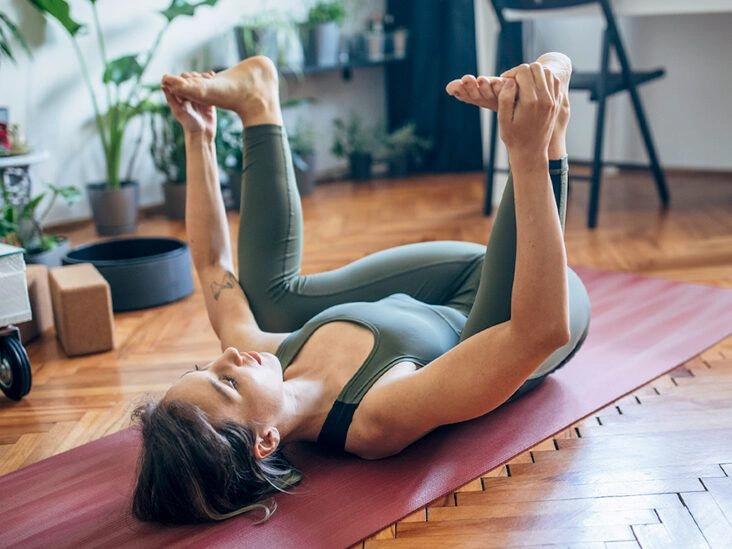Happy Baby Pose is a straightforward, calming yoga posture that can promote relaxation and enhance flexibility. As the name implies, the pose has you lying on your back with knees drawn toward the chest while holding onto the feet.
Also known by its Sanskrit name Ananda Balasana, the Happy Baby Pose is a common stretch used in both yoga and Pilates.
Because of its soothing motion, Happy Baby is frequently included in yoga and Pilates sessions. It can support improved mobility and flexibility through its gentle opening actions.
But what exactly is the Happy Baby Pose? Below is an explanation of how to perform it and the potential advantages of this movement.
What is the Happy Baby Pose?
Ananda Balasana comes from Sanskrit: ananda means “happy,” bal means “child” or “baby,” and asana means “pose.”
The pose earns its name because, when you lie on your back and hold your feet, your shape resembles a content baby on its back. Many of us have seen infants in this very position while lying on a blanket or in a crib.
Just as this posture often soothes babies, Ayurvedic traditions suggest it can also comfort your inner self.

Happy Baby is relatively easy to perform, making it suitable for beginners. Instructors commonly place it near the beginning or the end of yoga or Pilates classes because of its relaxing influence.
How to do the Happy Baby Pose
Follow these steps to practice the Happy Baby Pose:
- Step 1: Lie flat on your back on a mat or the floor.
- Step 2: With your head resting on the mat, bend your knees toward your chest to about a 90-degree angle. Point the soles of your feet toward the ceiling. Try to keep your tailbone grounded.
- Step 3: Reach forward and hold the inside or outside edges of your feet. Open your knees outward, directing them toward your armpits.
- Step 4: Stay in this position for a few full breaths, inhaling and exhaling slowly.
- Step 5 (optional): Press your heels into your hands and gently rock side to side, mimicking a happy baby.
Health benefits of the Happy Baby Pose
The Happy Baby Pose is intended to stretch the inner thighs, hamstrings, and groin while loosening the hips and back. It may also support increased flexibility and spinal alignment.
Poses like this one can offer benefits such as:
- improved mobility
- better balance
- reduced stress
- opening of the inner thighs, hips, and groin
- spinal stretching and alignment
- lowered heart rate
If you struggle with flexibility or mobility, consult a healthcare provider. They can advise suitable treatments or lifestyle adjustments tailored to your needs.
Who should avoid the Happy Baby Pose?
This pose is not recommended if you have an injury to the neck, knees, hips, or glutes.
Happy Baby is also discouraged for pregnant individuals, since lying on your back can affect circulation to the fetus.
Explore safe pregnancy exercise routines to find alternatives that help you stretch and relax comfortably.
Frequently Asked Questions?
Is Happy Baby Pose good for the pelvic floor?
Happy Baby encourages a lengthening of the pelvic floor muscles, which may relieve tightness.
What muscles does Happy Baby Pose target?
This pose primarily targets the inner thighs, hamstrings, and muscles of the back.
What are the disadvantages of Happy Baby Pose?
Because of how it positions the body, Happy Baby is not advised for those with neck or knee injuries, or for pregnant people.
Takeaway
Happy Baby Pose is a gentle, easy-to-do yoga posture. Named for the resemblance to a content baby on its back, it involves lying down and holding your feet in a relaxed position.
The pose offers several potential health perks, including improved flexibility and mobility, reduced stress, and a lower heart rate.
Remember that Happy Baby is not suitable if you are pregnant or have a neck or knee injury.


















Leave a Reply
You must be logged in to post a comment.